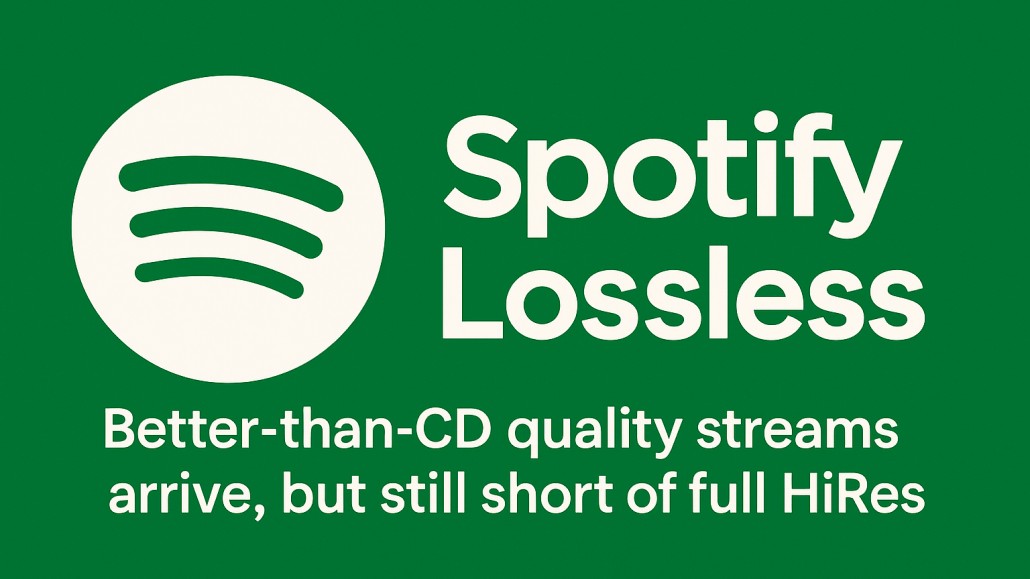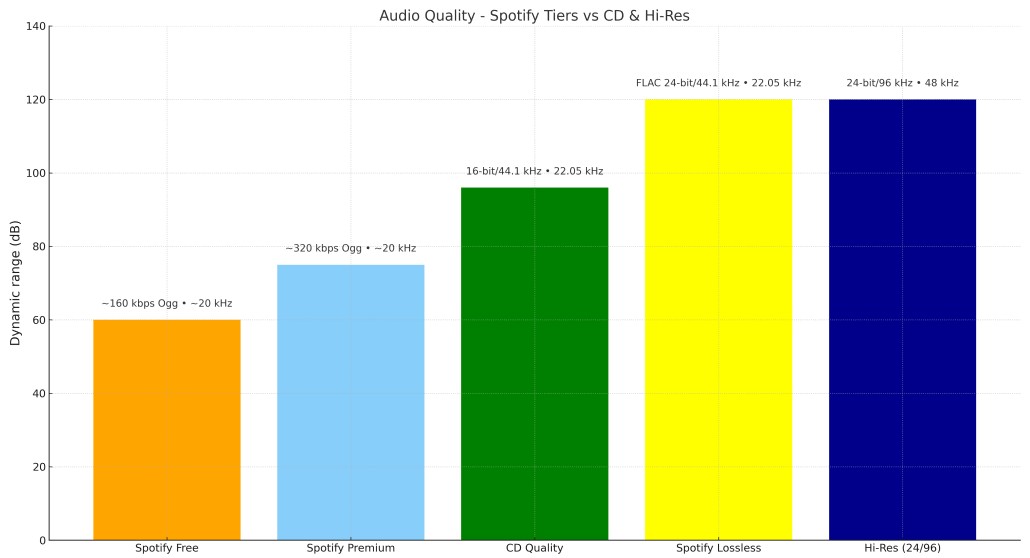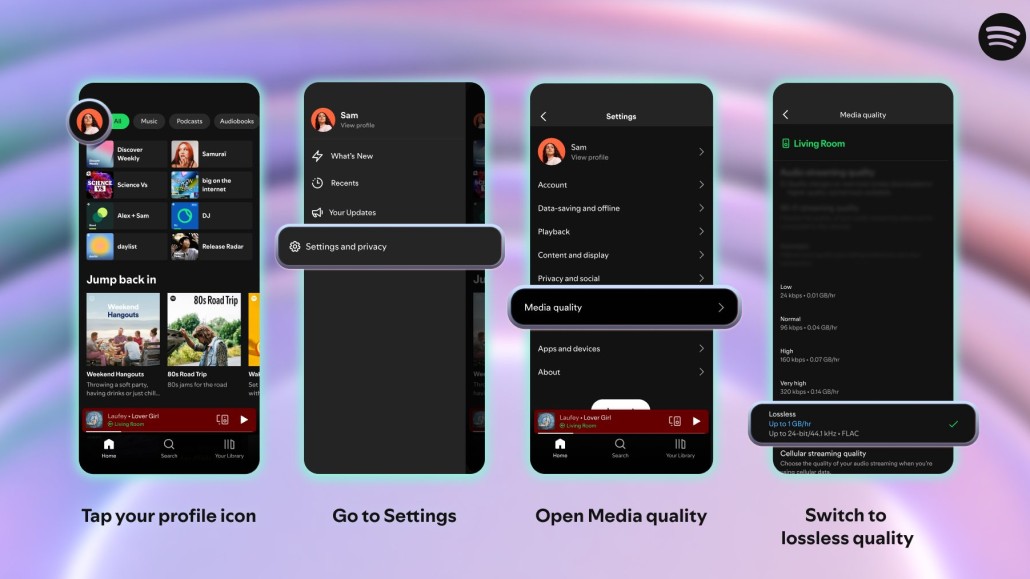
Spotify has finally rolled out its long-awaited Lossless tier as part of its Premium subscription plan. For years, audiophiles have debated whether Spotify would join rivals like Apple Music, TIDAL, Qobuz, Amazon Music, and Deezer in offering lossless audio. The answer is now clear: Spotify Lossless offers 24-bit/44.1 kHz FLAC streams — better than CD quality, but not full HiRes (24-bit/96 kHz or higher).
The rollout is global, covering more than 50 countries where Premium is offered, although availability may vary depending on local licensing.
What is Spotify Lossless?
Spotify Lossless uses the FLAC codec at 24-bit/44.1 kHz. That’s technically superior to CD audio (16-bit/44.1 kHz) and significantly better than Spotify’s existing Ogg Vorbis streams (up to 320 kbps for Premium, 160 kbps for Free). However, it stops short of HiRes services that go up to 24-bit/96 kHz or even 192 kHz.
How does it compare to other Spotify tiers?
- Free: 160 kbps Ogg Vorbis (lossy)
- Premium Standard: 320 kbps Ogg Vorbis (lossy)
- Premium Lossless: 24-bit/44.1 kHz FLAC (lossless, CD+ quality)
This represents a major upgrade for Premium subscribers but keeps Spotify distinct from full HiRes rivals.

How does it compare to competitors?
HiRes providers:
- Amazon Music Unlimited: Up to 24-bit/192 kHz HiRes
- Apple Music: Lossless up to 24-bit/192 kHz (ALAC)
- Qobuz: HiRes FLAC up to 24-bit/192 kHz
- TIDAL: HiFi and HiRes tiers (FLAC/MQA, up to 24-bit/192 kHz)
CD quality only:
- Deezer: CD Quality (16-bit/44.1 kHz FLAC)
- Napster: Some catalogue available in CD Quality FLAC
Lossy only:
- Pandora: 128–192 kbps AAC
- SoundCloud: Up to 256 kbps AAC/MP3
- YouTube Music: Lossy AAC streams only
- SiriusXM: Lossy streams, bitrates vary but no lossless option
Is Spotify Lossless HiRes?
No. Spotify Lossless stops at 24-bit/44.1 kHz. HiRes is generally considered 24-bit/96 kHz and above. So while this is a big step forward, it’s not the full HiRes that rivals like Qobuz or Amazon Music offer.
Which devices support Spotify Lossless?
Spotify Lossless plays through the Spotify app on iOS, Android, Windows, and macOS. It also works over Spotify Connect. However, AirPlay currently does not support Spotify Lossless (it will downsample), and no Bluetooth codec supports true lossless audio, though aptX Adaptive and LDAC come close.
How much data does it use?
- Free: 160 kbps → ~72 MB/hour
- Premium Standard: 320 kbps → ~144 MB/hour
- Premium Lossless: 24-bit/44.1 kHz FLAC → ~1.4 Mbps → ~630 MB/hour
- HiRes (24-bit/96 kHz) for comparison → ~2.9 Mbps → ~1.3 GB/hour
This means Lossless uses roughly 4× more data than Premium Standard. On a 10 GB mobile data plan, that’s about 15 hours of Lossless vs. 70 hours of Standard Premium.

What about Bluetooth and streaming?
No Bluetooth codec currently delivers bit-perfect lossless. AAC (used by Apple devices), SBC, aptX, and LDAC all compress the signal to fit bandwidth limits. Wired headphones, USB DACs, or Wi-Fi-based casting (Chromecast, some Hi-Fi systems with Spotify Connect) are required for full Lossless playback.
The Bottom Line
Spotify Lossless is a welcome upgrade — finally giving users audio better than a CD and a huge improvement over Ogg Vorbis. But it’s not HiRes, and audiophiles who want 24-bit/96 kHz or higher will still need to look to Amazon, Apple, TIDAL, or Qobuz. For everyday listeners, however, Spotify’s Lossless tier strikes a practical balance between quality, device support, and simplicity.




